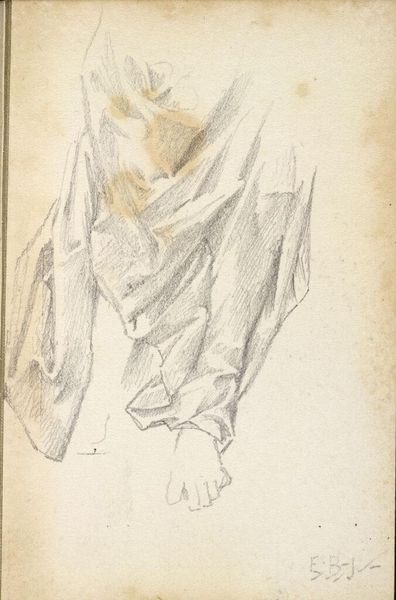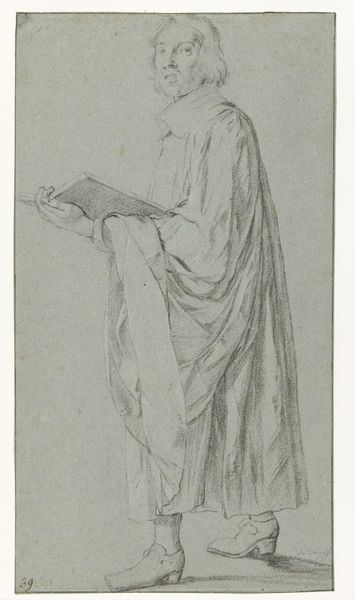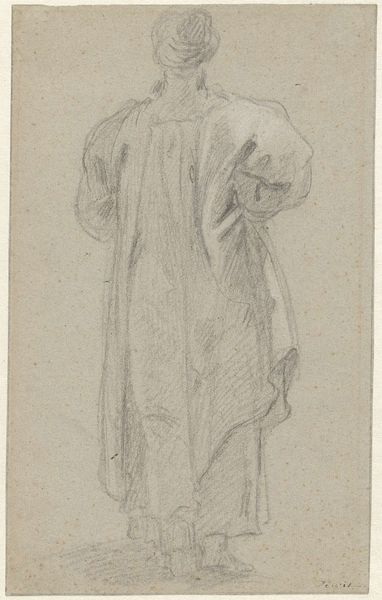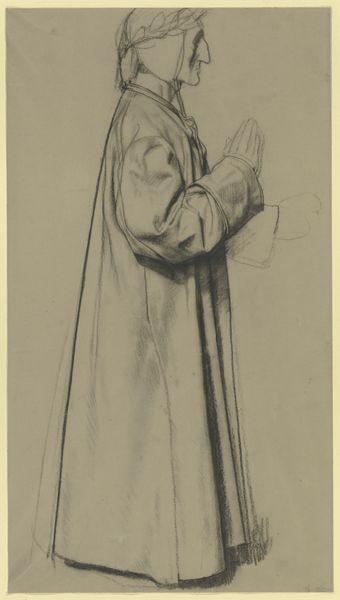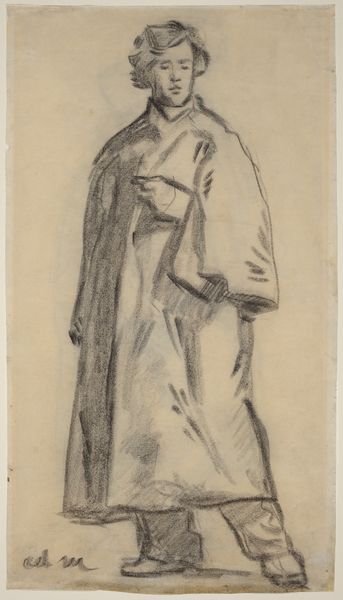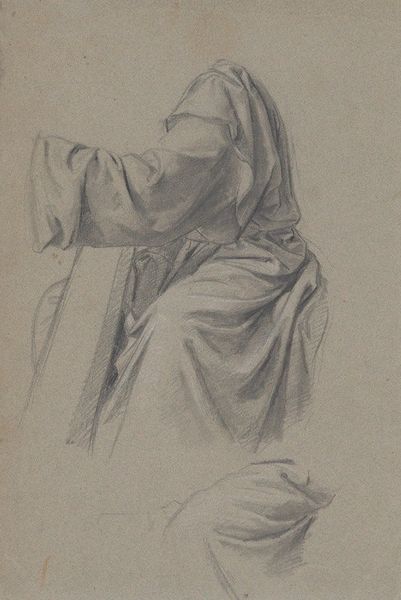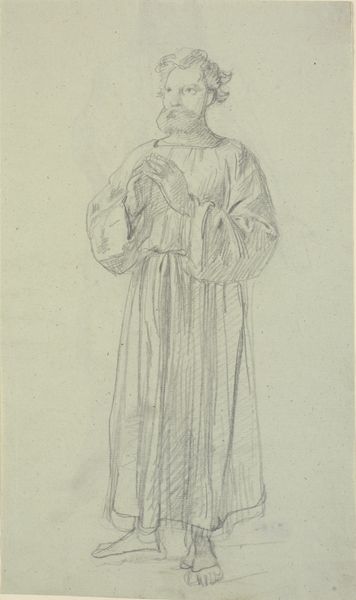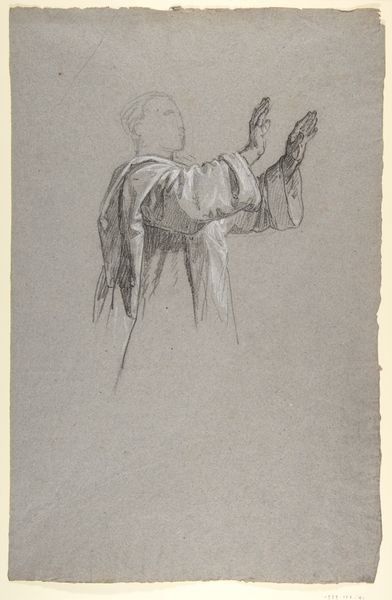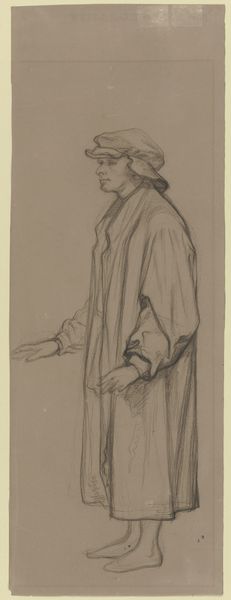
Drapery Study for a Cleric (lower register; study for wall paintings in the Chapel of Saint Remi, Sainte-Clotilde, Paris, 1858) 1825 - 1875
0:00
0:00
drawing, paper, pencil
#
portrait
#
drawing
#
paper
#
pencil drawing
#
pencil
#
men
#
portrait drawing
#
academic-art
Dimensions: 11 7/16 x 7 7/8 in. (29.0 x 20.0 cm)
Copyright: Public Domain
Editor: This is "Drapery Study for a Cleric," a pencil drawing on paper by Isidore Pils, made sometime between 1825 and 1875. It looks like a study of fabric and form more than a portrait. The cleric's hands are clasped behind his back, holding what seems to be a book, hidden under the draped fabric. It gives me a sense of quiet observation, almost like catching a glimpse of someone lost in thought. What stands out to you about this piece? Curator: What captures me, and it's almost haunting, is how Pils uses drapery to conceal and reveal, like secrets whispered through cloth. Notice how the light dances across the folds, suggesting the form beneath but never fully exposing it. It reminds me of the way we, too, present ourselves – veiled yet hinting at the complexities within. I wonder what stories the cleric's concealed hands could tell... What do *you* think he's hiding, or perhaps protecting? Editor: That's interesting. I hadn't thought of the drapery as suggestive of hidden stories, but the way you describe it makes perfect sense. I guess I just saw it as a practice piece for a larger work. But thinking about it more, his hands clasped behind his back could suggest both piety *and* anxiety... Maybe he is protecting something. Curator: Exactly! And that ambiguity is where the magic lies, isn't it? Pils has given us a fragment, a whisper, and it's up to us to imagine the rest. Isn't it wonderful how a simple study of fabric can reveal so much about the human condition, you know? Even without a face! Editor: Absolutely. I came into this thinking it was a purely technical exercise, but I’m leaving with a completely different impression. The hidden hands and suggestive drapery—it’s a study in subtlety. Curator: Subtlety and suggestion, yes! Always trust in art’s quiet language to uncover things that startle us.
Comments
No comments
Be the first to comment and join the conversation on the ultimate creative platform.
